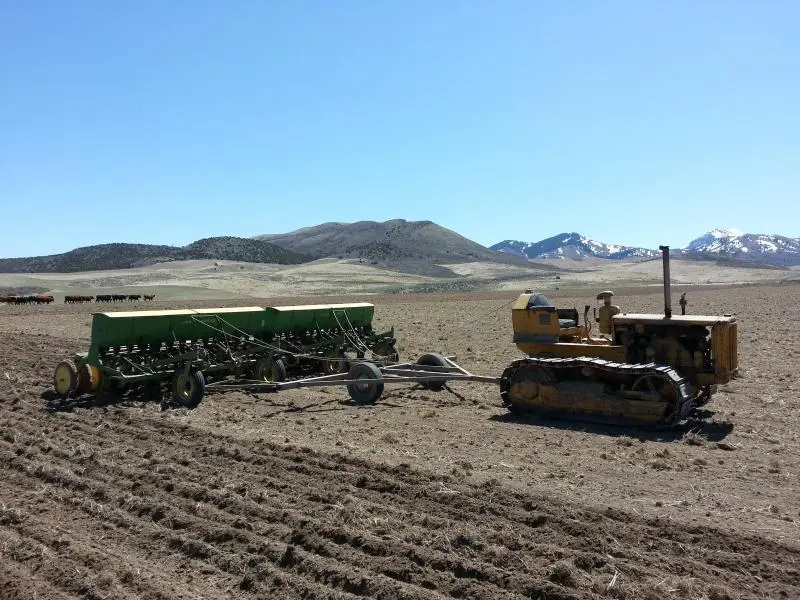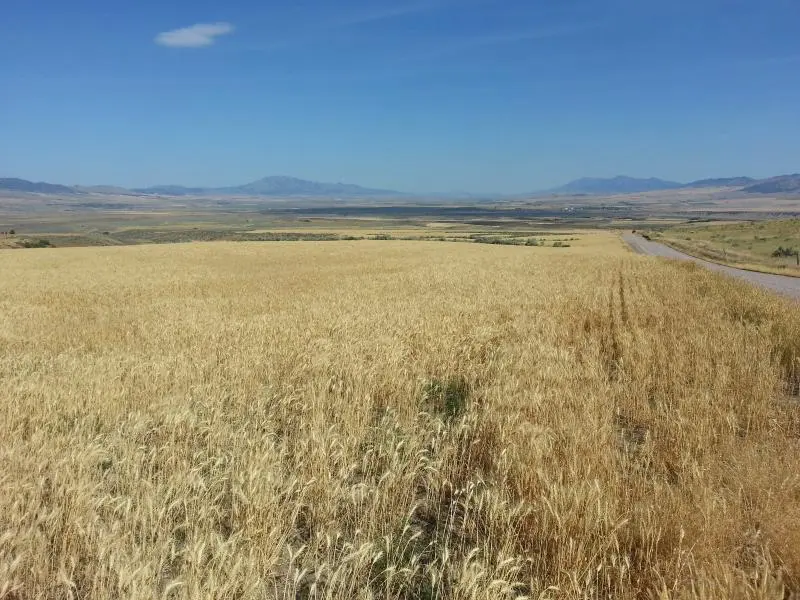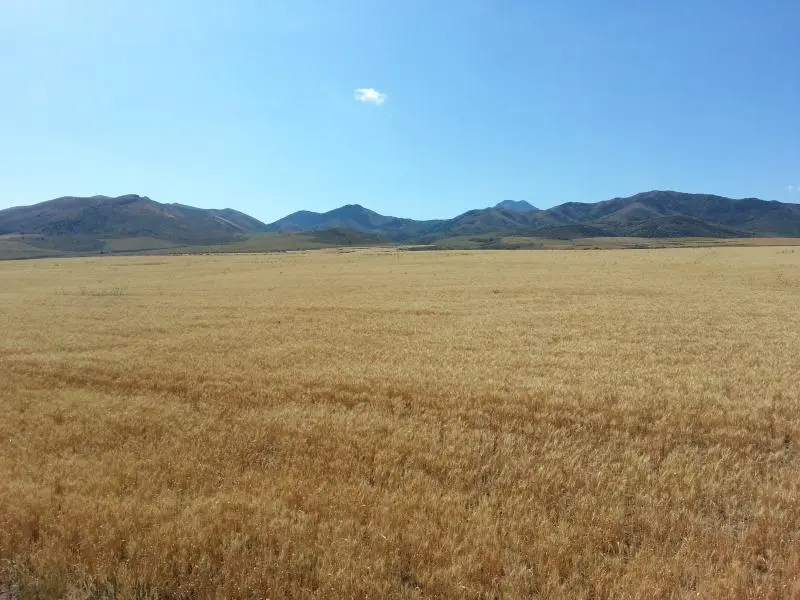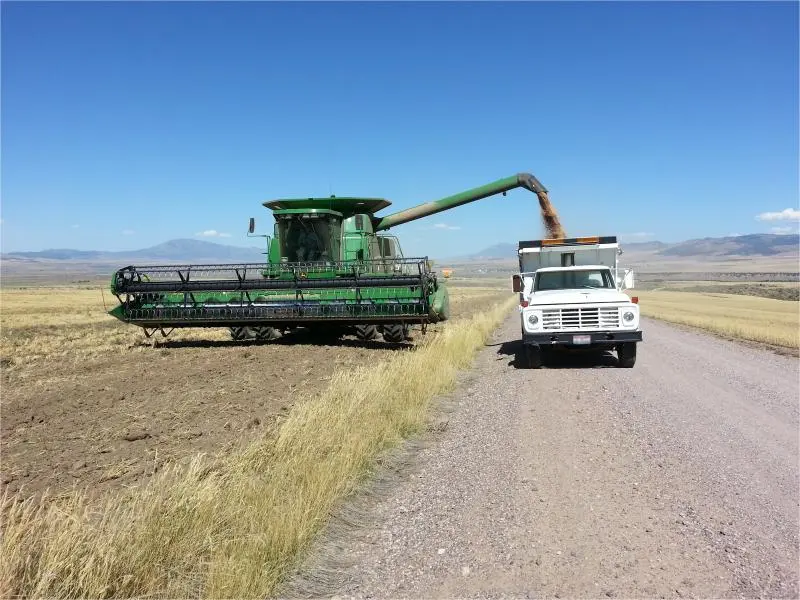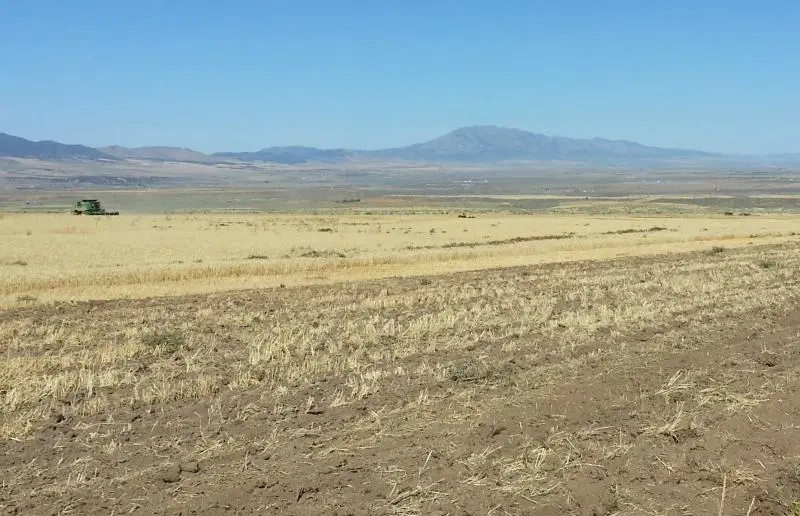Reply to 8C 361:
Good for you guys, keep at it. It looks like that sagebrush is giving you a hard time. Our ranch has not been farmed in about the same time. It was not in CRP but could have been. We have been running cattle. There is a 4'-5' stand of coyote brush, thick in spots. I am chopping with a D2 5J with a PTO Sidewinder, and plowing with a D4 7U and 4-14"s, turning it all downhill. It is covering well but it is kind of dry, am breaking plow points.
I am 4th generation, while I am working I think about my great-grandfather grubbing brush by hand and plowing with a team.
[quote="8C 361"]Good for you guys, keep at it. It looks like that sagebrush is giving you a hard time. Our ranch has not been farmed in about the same time. It was not in CRP but could have been. We have been running cattle. There is a 4'-5' stand of coyote brush, thick in spots. I am chopping with a D2 5J with a PTO Sidewinder, and plowing with a D4 7U and 4-14"s, turning it all downhill. It is covering well but it is kind of dry, am breaking plow points.
I am 4th generation, while I am working I think about my great-grandfather grubbing brush by hand and plowing with a team.[/quote]
I'm also 4th generation on the land, though I live 100 miles away and make a living as an engineer. My great grandfather used a single bottom plow behind a 2 horse team to break the ground. Later he bought a steel wheel Fordson then gasoline Cats, first a Two Ton, then a 20 and 30 followed by an RD4. I think there was a D4 and D6 along the way but the only Cat of his I ever saw personally was this D2 purchased just before I was born. I have a photocopy of a photo of him on the Two Ton. He farmed into his 90s. My dad tells a story of watching him drive the Cat around working the field, stop, get off, pull a hammer out of the fender tool box and start pounding in the dirt. It was a rattle snake that he killed with a ball peen hammer!
A century ago, most of the sage brush was first burned on the stump.
I figured I could also spot burn the big sage brush by first spraying with diesel then lighting it with a propane torch. I even bought the pump up weed spray cans for the diesel (figured I could use the rusty fuel in the D2) and a pair of 500,000 BTU/hr propane torches. My dad asked the fire marshal and he said it was ok from a fire safety factor at that season, but that you needed a state air quality permit. The DEQ process required sending the application payment in advance. If approved they'd call you ~24 hours ahead of time, but they said don't call us, we'll call you - and don't expect us to call you. Basically you can't burn fields in Idaho from my reading of the DEQ brochure.
In the thicker areas of sagebrush it would pack in the digger tines. Since we have no hydraulics on these machines we'd have to dismount, climb up on the digger pull the digger out of the ground by unlatching and pulling levers, climb back on and back up a few feet, hop off and unpack the brush from under the implement. It was hard work. I'm taller and weigh half again more than my nephews (but they have more stamina) and it took all my weight, muscle and leverage to pull the handles down at times - especially on a steep side slope. Often I'd have to pull out the upper side, make a U turn so the low side was uphill and do it again. It seemed to take forever to make the first round along the edge of the field. It would have been easier with our larger digger and hydraulics had we not lost the 84J D4D SA to an un-noticed cracked oilpan while dozing with it a few years ago. Ultimately we did get through all but the heaviest brush last summer/fall. I plan to use the D6B blade to scrap off the really heavy brush next year. Most of the field looks pretty good now, but I don't know how the combine will fare picking up sagebrush remnants.
